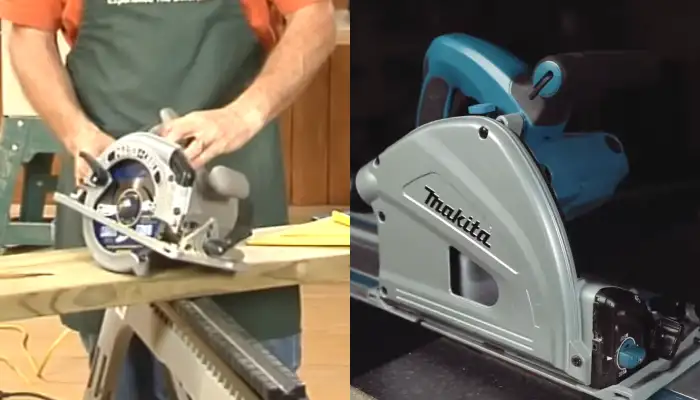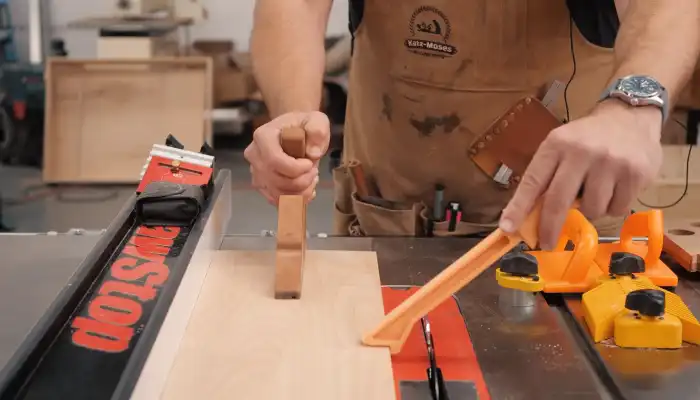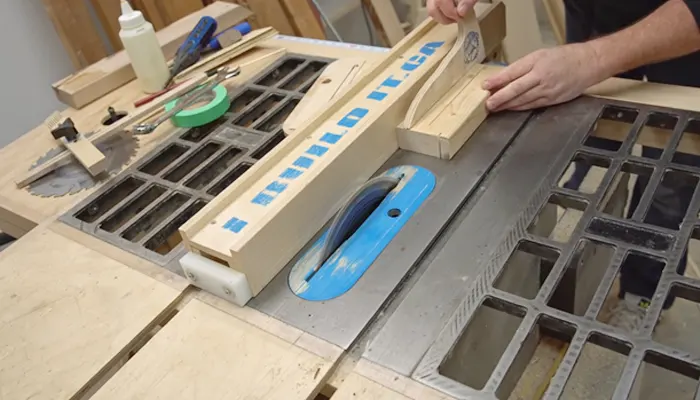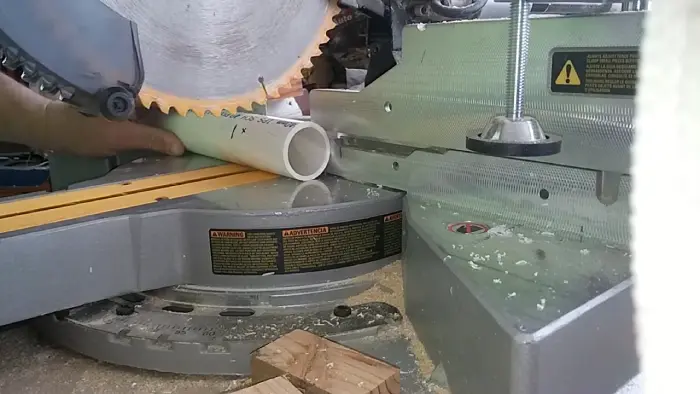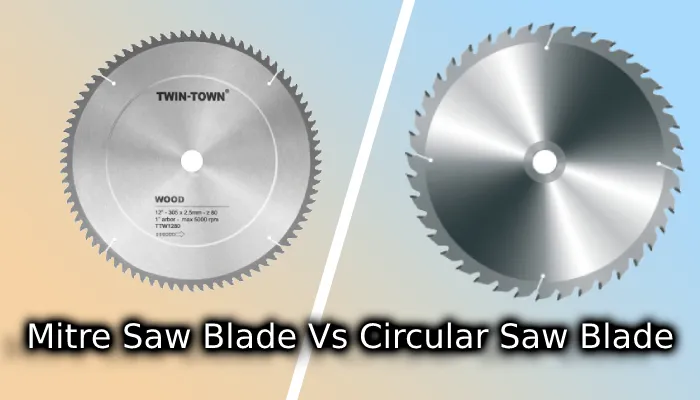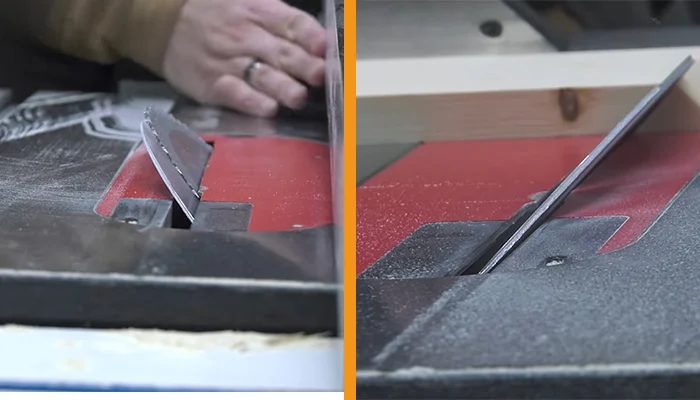Circular Saw vs Plunge Saw: 7 Distinct Differences [Detailed]
Plunge saws & circular saws both offer efficient cutting, but a suitable saw can mean all the difference between achieving the desired results you’re happy with or struggling to accomplish them.
If you’re a professional or a hobbyist, choosing the right saw can help you get the results that you want, so understanding how these two differ is important.
Although there are several differences between circular saw & plunge saw, the most noticeable one is their cutting finish. While circular saws are portable power tools with rotating blades with teeth on the edges, plunge saws are specifically designed to cut precise cuts into thick materials such as laminates and hardwoods.
Knowing when each tool is best utilized can help ensure your investment is maximized. Let’s review the specific differences between these two types of saws so you can pick the proper one for any job.
Distinct Differences Between Circular Saw vs Plunge Saw
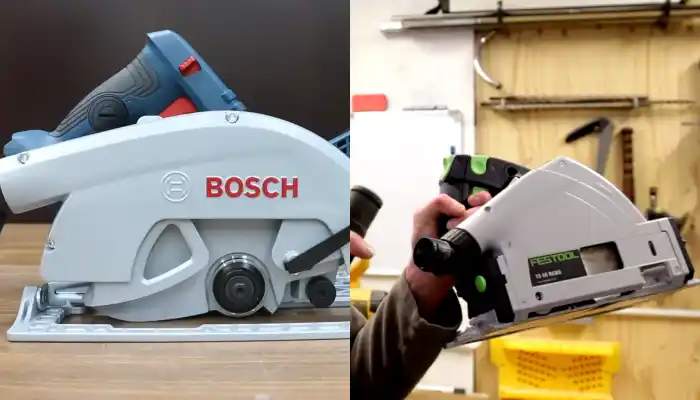
Both of these saws come with specialized uses and design elements, so let’s look at their distinct differences:
Construction Design:
Woodworkers commonly use a circular saw for chopping wood and feature blades rotating around an arbor. This blade type is perfect for making straight cuts across boards or sheets of materials like plywood and Sheetrock. The blade guard helps protect your hands from potential debris and chips as you cut.
Unlike circular saws, a plunge saw (AKA track saw) features an attached or mountable guide rail and an adjustable depth stop allowing you to make more precise cuts than a circular saw. They have a base unit that allows you to maneuver the plunge-style blade freely along its track for the more precise cutting control.
Cutting Finish:
Circular saws can create plenty of dust when cutting through material which requires cleaning up after use. But due to the design of their blades, they will leave smooth edges with minimal tear-out on both sides of each cut, making them ideal for framing applications.
Plunge saws also produce quite a bit of dust but have much smoother edges without tearing as they employ a special scoring technique when making their cuts, creating cleaner results than circular saws.
User Safety:
Circular saws provide more leverage when making cuts since they are held by hand rather than by both hands, like in the case of plunge routers which require two hands to operate safely. But they also offer less control which can lead to kickback if too much force is applied during operation.
Plunge Saws offer greater precision when making cuts but require extra concentration from users due to their double-handed operation, so injuries such as tendonitis can occur if not used correctly or overused in one day.
Dust Management:
When it comes to dust management, the distinct differences between a circular saw and a plunge saw are striking. The circular saw relies on its blade guard for dust collection, which captures some but not all of the debris created by cutting.
The plunge saw, however, utilizes adjustable dust extraction ports that allow for more efficient and effective dust removal from the work area. This feature is particularly useful when working with materials that produce abundant fine particles, like MDF or plywood.
Accuracy and Versatility:
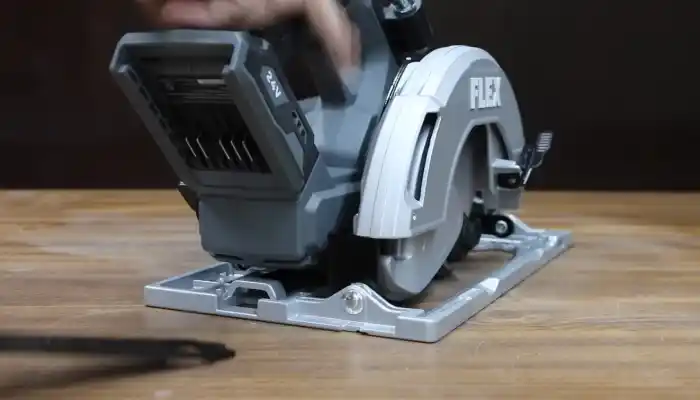
Regarding accuracy and versatility, a plunge saw has advantages over a circular saw. This is because its blade is mounted on a rail, allowing it to move horizontally and vertically along an exact trajectory while cutting the material.
This makes plunge saws perfect for cutting straight lines with precision accuracy and making miter cuts (angled crosscuts) without having to adjust the position of the wood itself. Also, since plunge saws can make precise cuts, they are ideal for making intricate curves and shapes and rabbets (notches).
Circular saws have limited accuracy since they rely on unevenly spinning blades which cause inaccuracies in longer cuts. They have some benefits regarding versatility since they can be used for various tasks such as ripping lumber, making crosscuts, cutting dadoes (grooves) in plywood, etc.
Flexibility and Manoeuvrability:
Regarding flexibility and maneuverability in terms of ease of use during construction projects or DIY tasks, circular saws take the cake from a plunge saw every time.
This is due to their free-rotating blade, which allows them to cut at any angle desired by simply adjusting its depth guide setting. Sometimes It cannot be done with plunge saws whose blades are fixed on their track rails.
Additionally, circular saws are incredibly maneuverable, allowing them to make tight turns around corners without difficulty. Whereas plunge saw designs require more complex maneuvering techniques since their tracks must be shifted to make these turns effectively.
Prices:
Although both saws offer value at different price points based on model specifications, overall pricing can be hard to compare when each tool has many features.
Typically, a quality plunge saw will be more expensive than an equally powerful circular saw due to its higher-grade parts and additional features like laser guidance systems or guide rails.
For example, basic corded circular saw models can be bought fairly cheaply, whereas more advanced cordless options may cost several hundred dollars depending on features like power output or battery life.
On the other hand, most plunge saw models available today start from the $350-$400 range, even for basic versions but go up quickly depending on additional features such as laser guides or LED lighting systems.
What Should You Avoid Doing with a Plunge Saw or Circular Saw?
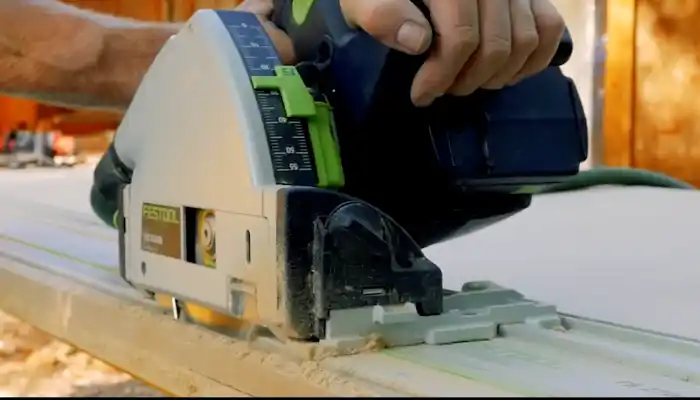
When operating a circular saw or plunge saw, you must take special caution to ensure safety, such as:
Inspecting Blades Before Use:
Before using a circular or plunge saw, it’s extremely important to inspect the blades for signs of damage, such as dents, burrs, or cracks. If any visible issues could affect the blade’s performance, it should be immediately replaced with a new one before use.
Not only does this help ensure maximum efficiency and accuracy and it reduces your risk of encountering problems further down the line due to inadequate blade quality or condition.
Avoid Applying Excessive Force When Retracting Lower Guard:
The lower guard on most plunge and circular saws is designed to retract when in use so you can access deeper cuts while keeping your hands safely out of harm’s way.
But it is not recommended that excessive force be used when retracting this guard as this can cause damage to both the guard itself and other components within the saw mechanism.
Instead, apply enough pressure until it begins retracting, stopping immediately once the desired depth has been reached. Otherwise, you risk hindering its ability to properly retract in future uses, which can lead to potential accidents if left unchecked.
Avoid Contacting the Shoe or Guard While In Use:
When using a plunge and circular saw, users should avoid touching the guard or shoe while in action. This can cause serious injury due to kickbacks created by rapid spinning blades, which rotate upwards of 5000 RPM (revolutions per minute) at high speeds.
Also, placing one’s hands too close to moving parts increases their chances of being cut by flying debris expelled by powerful motors, which may contain metal shards capable of slicing through the skin like a butter knife.
As such, operators should always keep their hands away from these areas unless necessary for adjusting purposes to remain safe during operation.
Be Careful Not to Over Tightening Blade Locking Nut:
In most plunge & circular saws, the blade locking nut is an integral part of their hardware, as it prevents the blade from becoming dislodged or flying off unexpectedly, resulting in a potential disaster for both the user and the material being worked on.
Applying too much torque on this nut during tightening can decrease its effectiveness over time, leading to problems such as slippage or even complete failure, so users should take care to avoid over-tightening this component when adjusting/replacing blades now and then.
Avoid Twisting the Saw When Changing Blades:
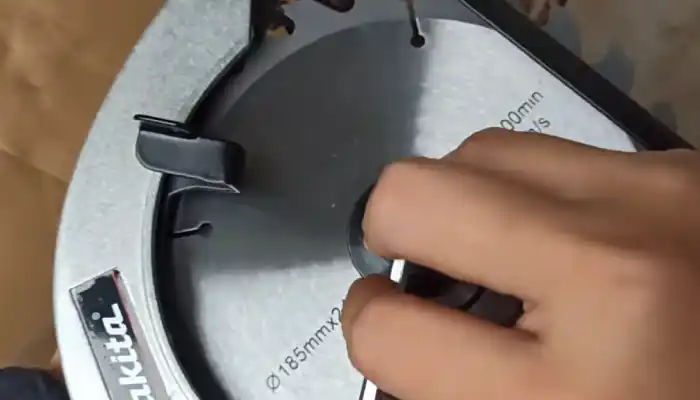
Replacing blades on a plunge or circular saw requires special attention since incorrect handling may result in permanent damage, such as twisting movements that will render them unusable after prolonged periods if left unnoticed.
To avoid unnecessary warping/twisting when changing blades between projects, users must be careful not to move the device while loosening screws attached near the shaft (usually done using a specially designed wrench) so that nothing gets bent out of shape.
Avoid Using a Saw that Vibrates or Looks Dangerous:
When using a plunge or circular saw, remember never to use a saw that looks dangerous or vibrates excessively. When operating either type of saw, the user needs to inspect it for any indications of wear or damage before beginning a task.
It is also critical to take a few moments and scan the workspace for any obstacles that may be in the way, as this could cause injury if not noticed before beginning the cut.
Can Any Circular Saw be Used as a Plunge Saw?
Yes, any circular saw equipped with a plunge base can be used as a plunge saw. This base allows the saw to move up and down, meaning it can start or end a cut before touching the material. As such, it’s perfect for making cuts on materials that may have irregularities or uneven surfaces.
It’s also great for cutting in tight corners and other hard-to-reach places. Remember that many manufacturers might sell circular saws with dedicated plunge bases designed to provide a more accurate cut than those without one.
Can You Cut a Straight Line With a Plunge Saw Without Guide Rails?
You can cut straight lines with a plunge saw with no guide rails, but it requires skill and precision. A good technique is to clamp two pieces of scrap wood together and use them as guides when cutting. This will help ensure accuracy.
Also, some plunge saws feature depth stops, allowing you to set the depth of the cut before starting so that you can easily make a consistent line along the material’s edge. Special blades designed for plunge saws make it easier to create clean cuts without relying on guide rails.
Can You Convert a Circular Saw to a Plunge Saw?
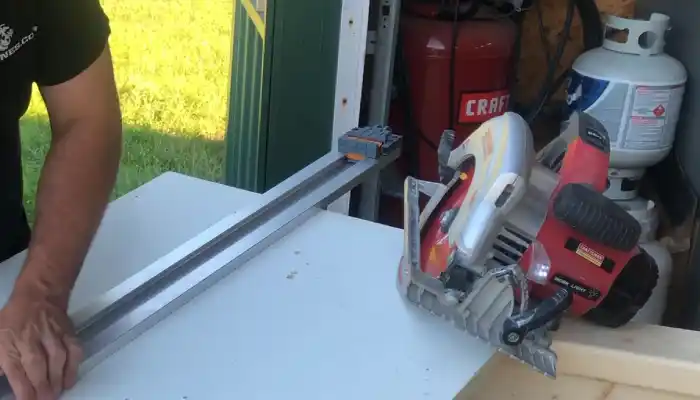
Yes, you can convert most circular saws into plunge saws by attaching an aftermarket plunge base plate or buying an aftermarket kit with all of the necessary components included. Not all circular saw models are compatible with aftermarket components like this.
If in doubt, check your model’s manual or contact its manufacturer for clarification first. Also, even if your model is compatible with conversion kits, it’s still essential to read through any provided instructions carefully before getting started. Improper installation could damage your saw beyond repair.
Circular Saw or Plunge Saw: Which One Do You Need?
No matter what type of woodworking project you have planned, understanding which type of saw is best suited for the job can save you time and money. You must consider the differences above before choosing between a plunge saw and a table saw for the best results.
Circular saws offer more flexibility and maneuverability than plunge models, while plunge saws excel at creating smooth and accurate cuts with greater precision. With an understanding of both tools’ differences, you will be better equipped to choose the best tool for your forthcoming project.

